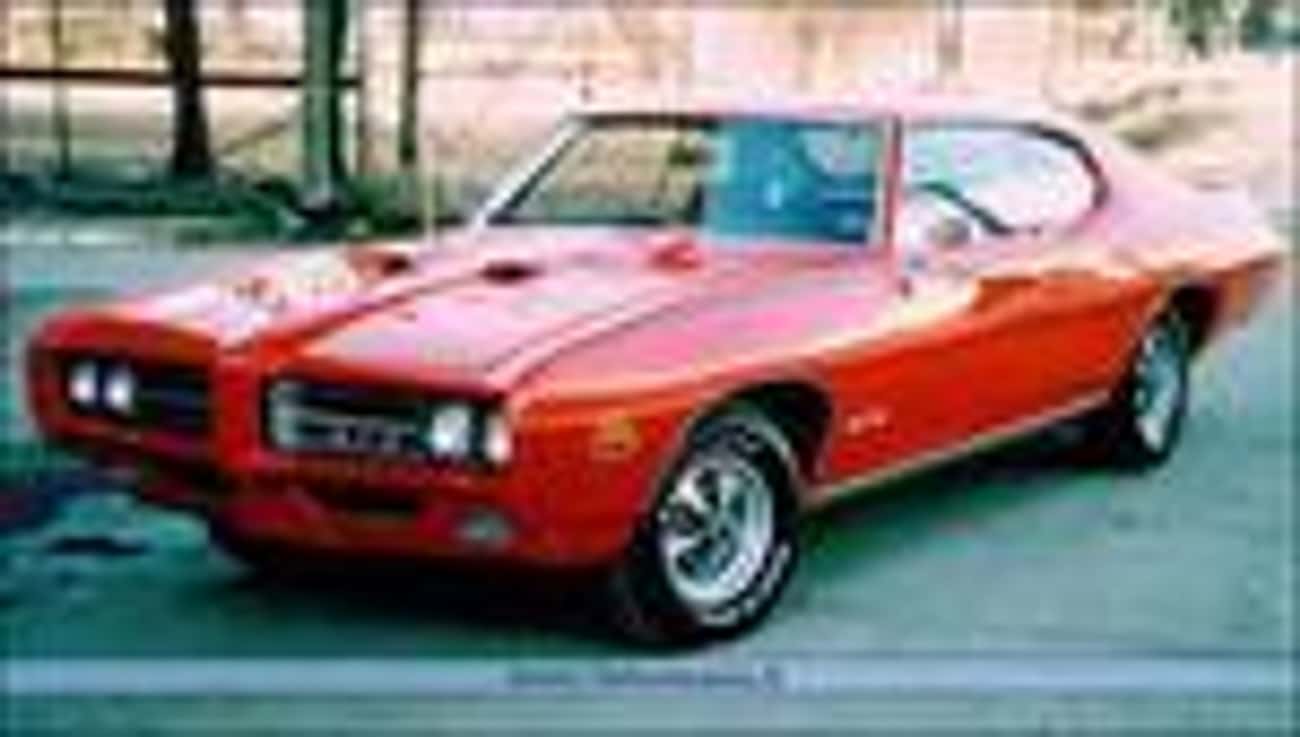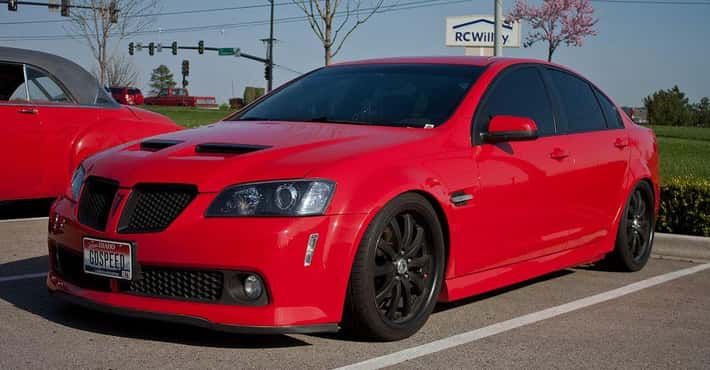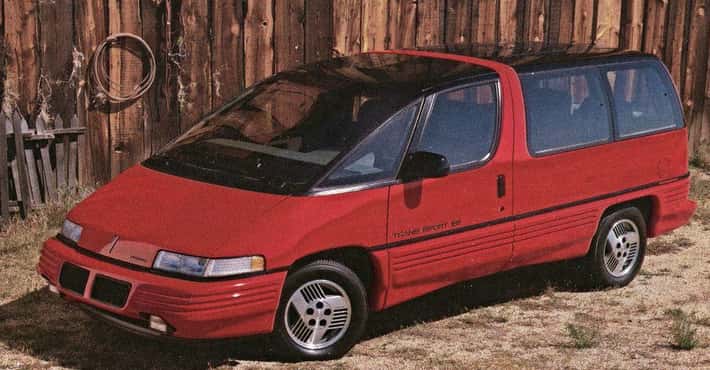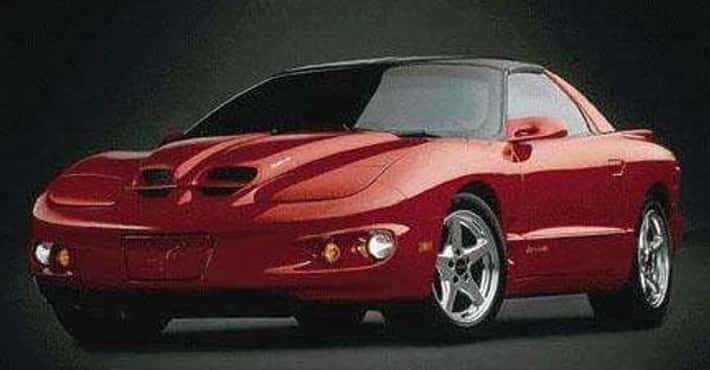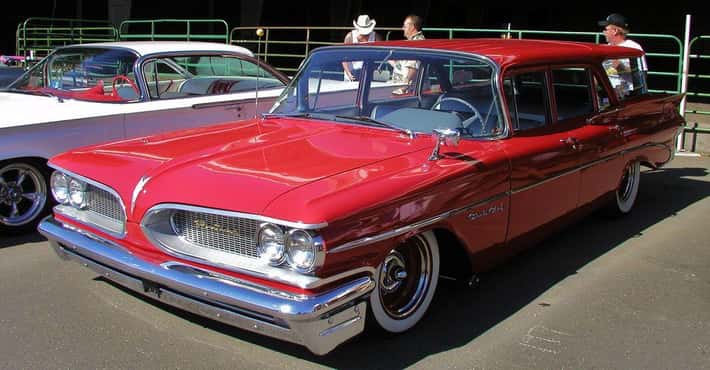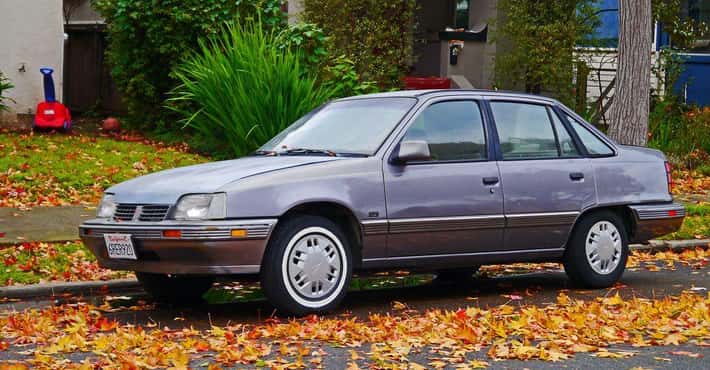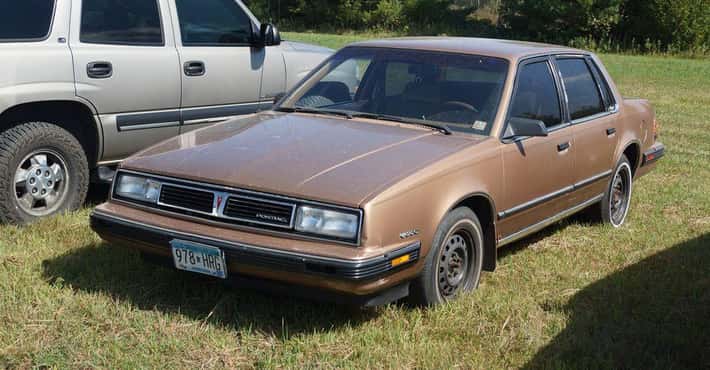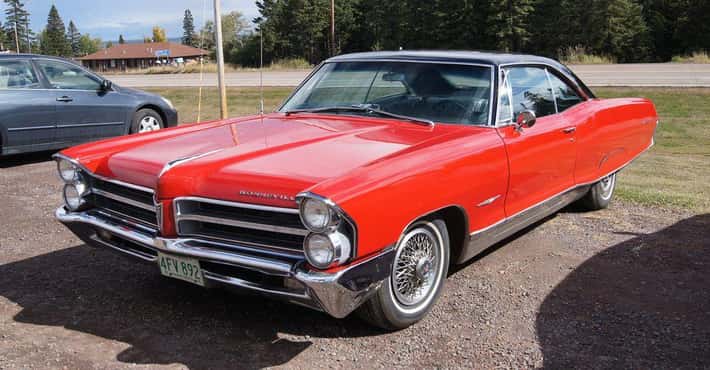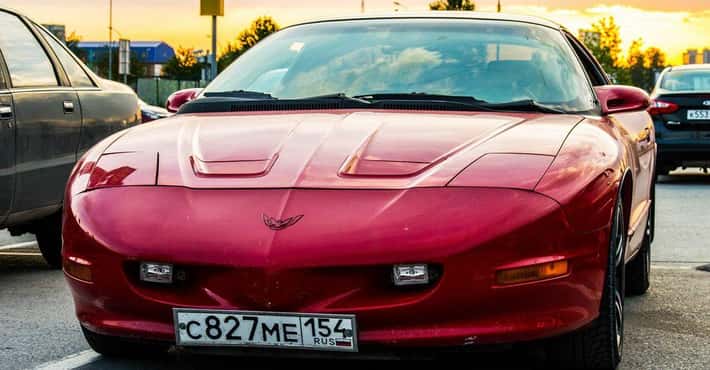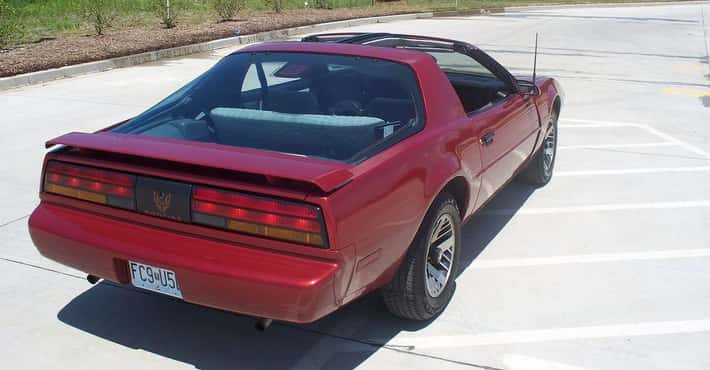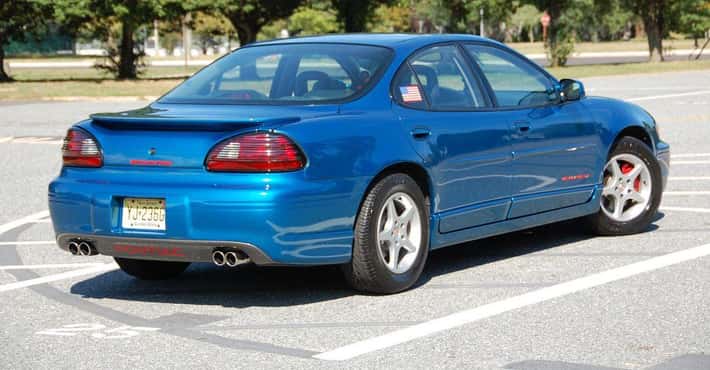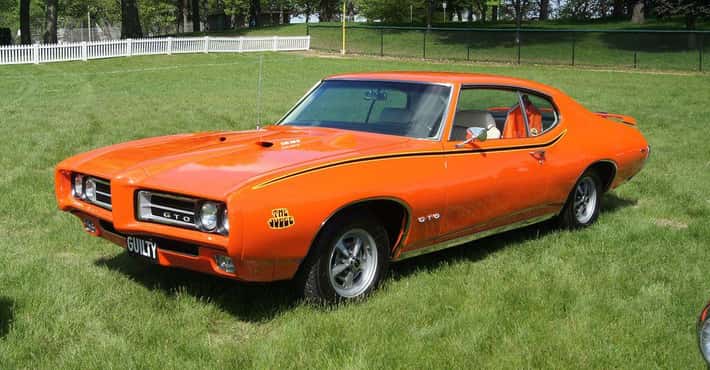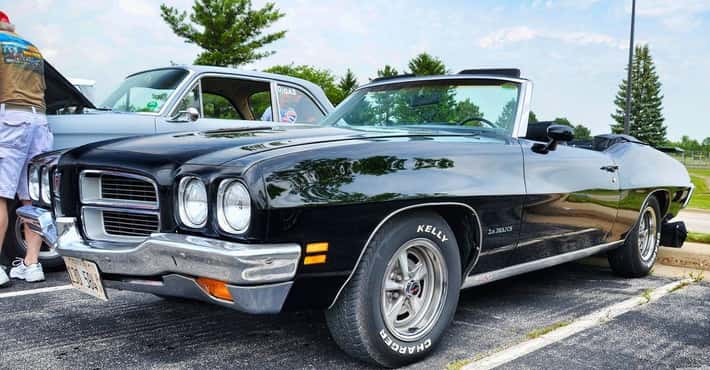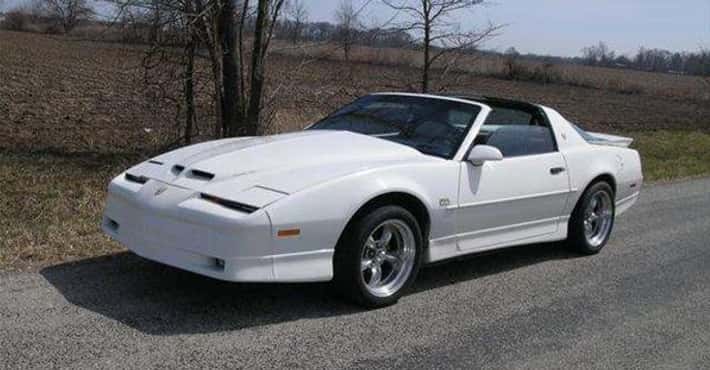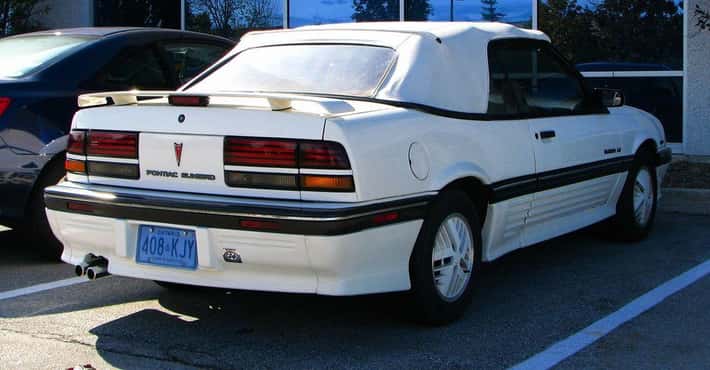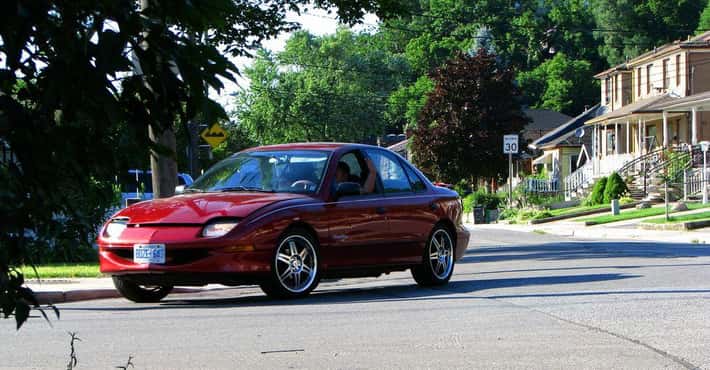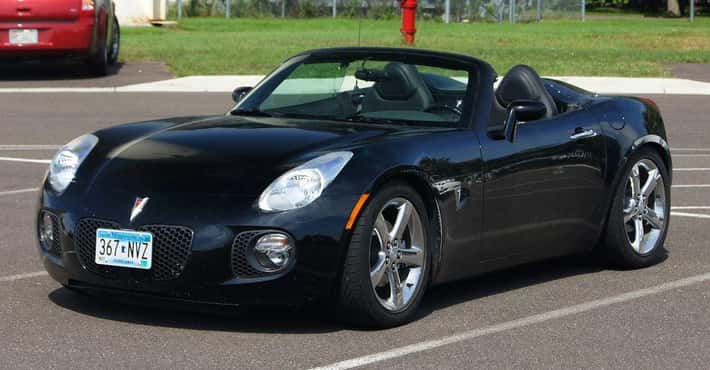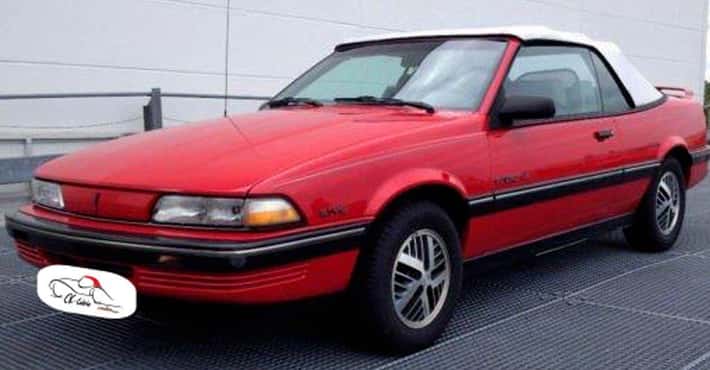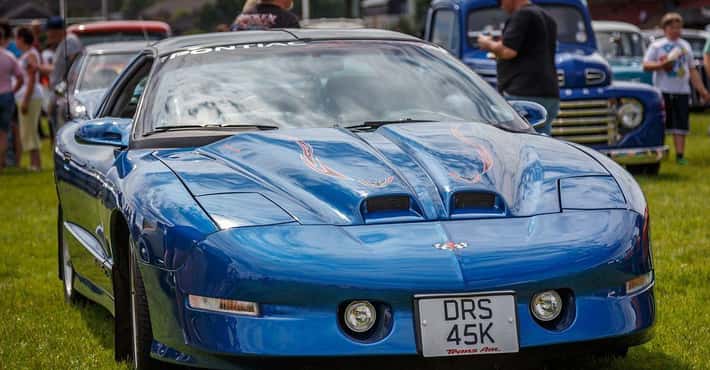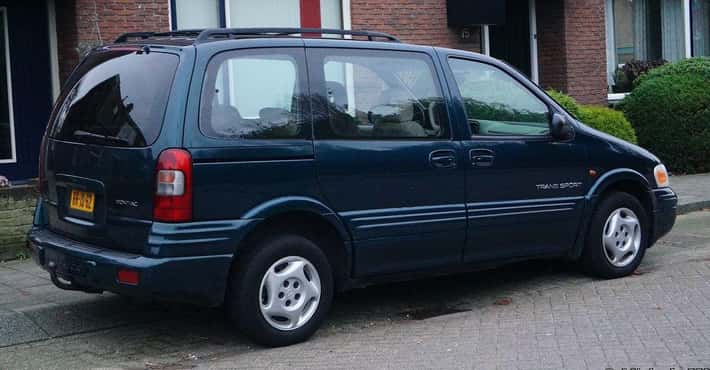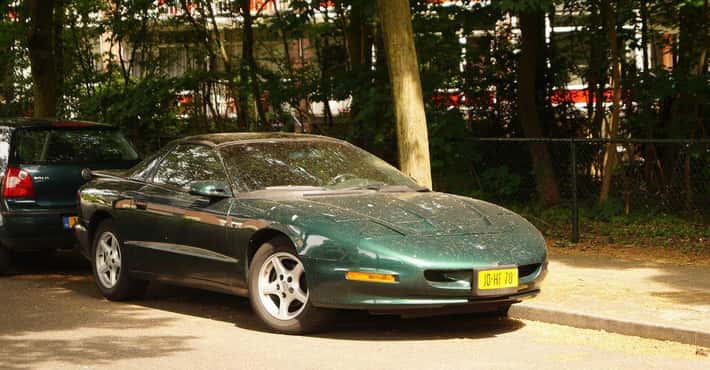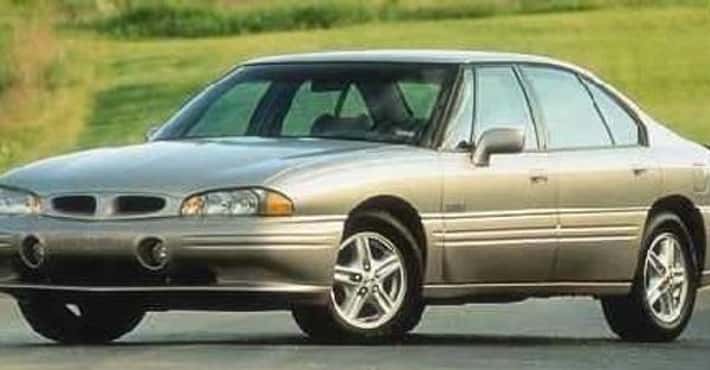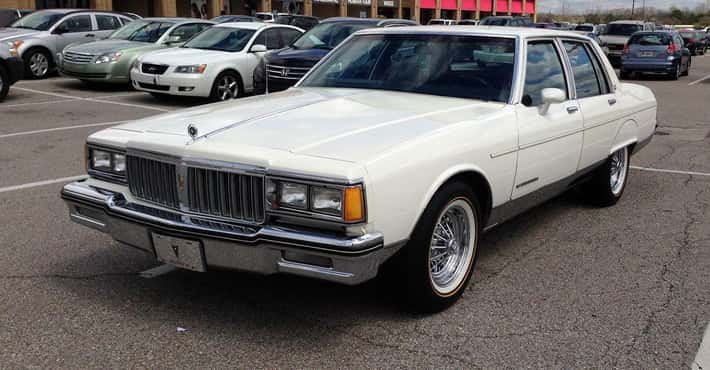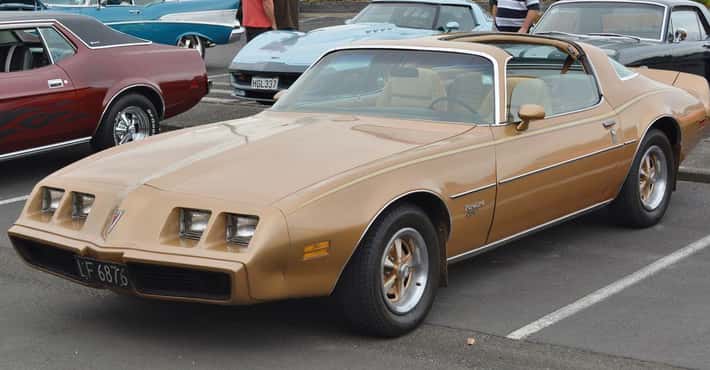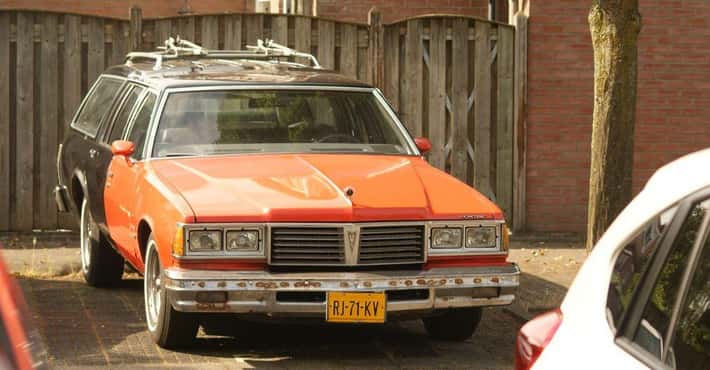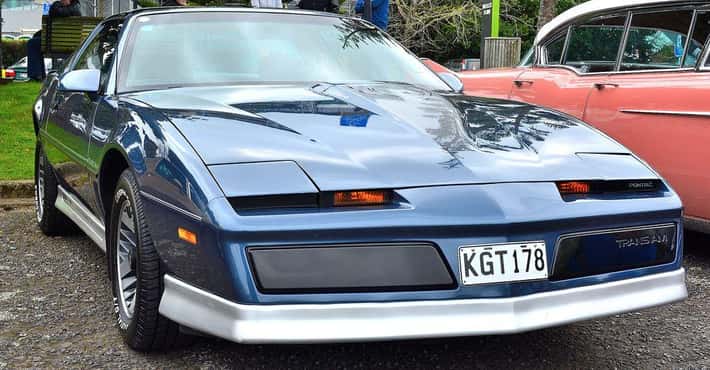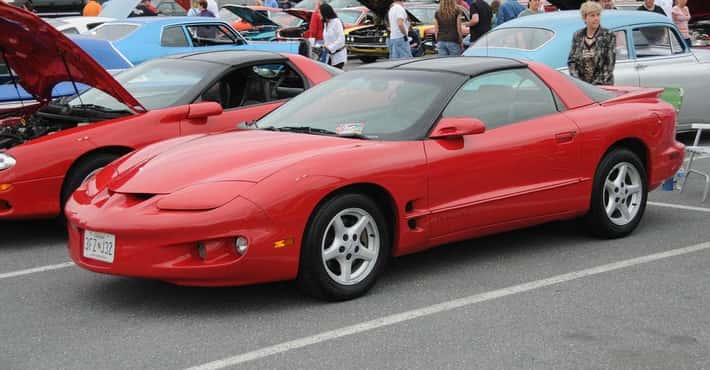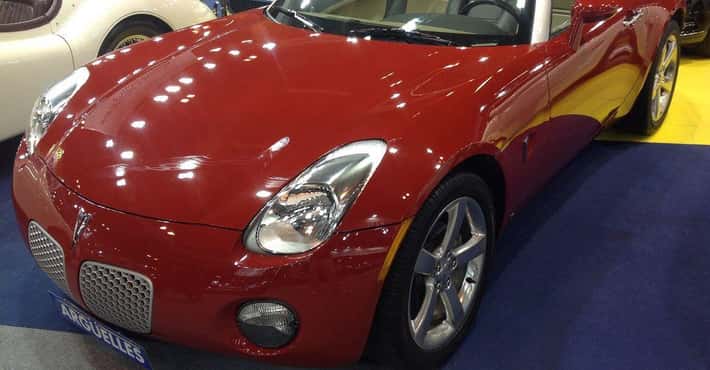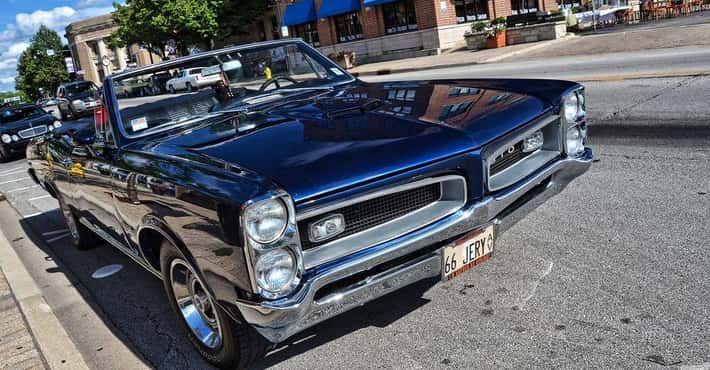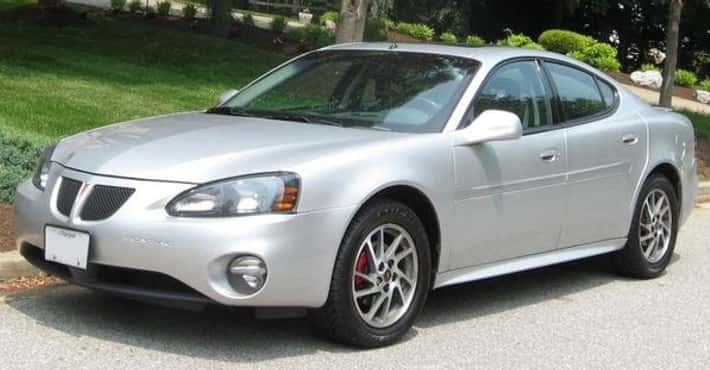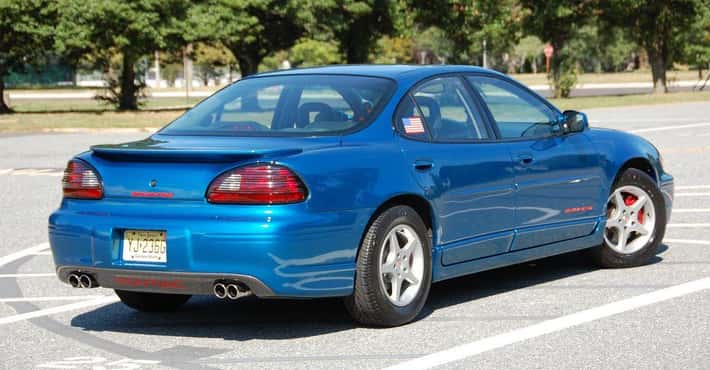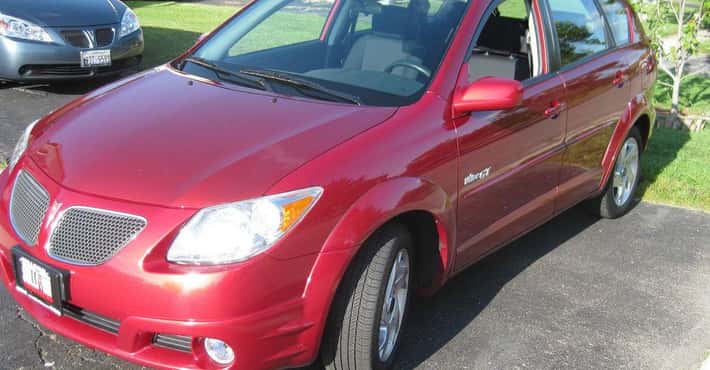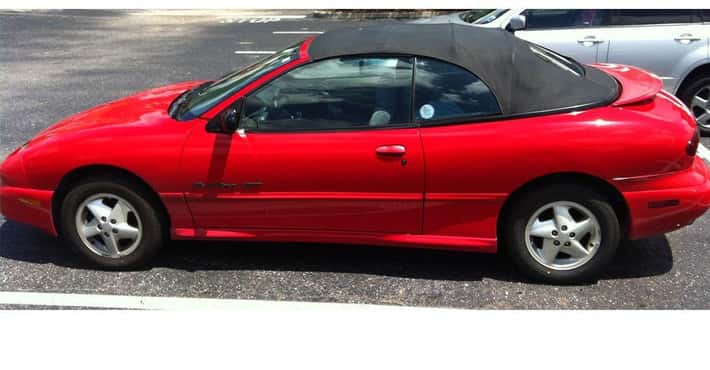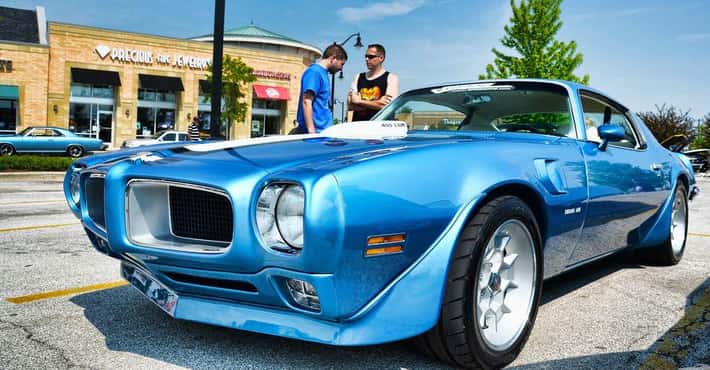Full List of Pontiac Models
- Photo: Metaweb (FB)The Pontiac GTO is an automobile that was built by the Pontiac division of General Motors from 1964 to 1974, and by the GM subsidiary Holden in Australia from 2004 to 2006. The first generation GTO was a muscle car of the 1960s and 1970s era. Although there were earlier muscle cars, the Pontiac GTO is considered by some to have started the trend with all four domestic automakers offering a variety of competing models. From 1964 until midway through 1973, the GTO was related to the mid-sized Pontiac Tempest/LeMans. The 1974 GTO was a one-year only optional package available on the compact-sized two-door Pontiac Ventura. The GTO model was revived from 2004 to 2006 model years as a captive import for Pontiac, a left-hand drive version of the Holden Monaro, itself a coupé variant of the Holden Commodore.More Pontiac GTO
- #11 of 61 onThe Best Inexpensive Cars You'd Love to Own
- #11 of 73 onThe Best 1960s Cars
- #60 of 223 onThe Ultimate Dream Garage
- Photo: Metaweb (FB) / Public domainThe Pontiac Aztek is a mid-size crossover marketed by Pontiac from the 2001 model year to the 2005 model year along with its corporate cousin, the Buick Rendezvous. As a four-door crossover with a front engine and four-wheel drive, the Aztek featured a four-speed automatic transmission with a V-6 engine. Marketed by Pontiac as a "sport recreational vehicle," The Aztek used a shortened platform shared with GM's minivans featuring 94 cubic feet of cargo room capable of carrying a 4' x 8' sheet of plywood with its rear seats removed. The design employed conventional rear swing-open kammback rather than sliding doors and a bi-parting rear tailgate, the lower section formed with seat indentations and cup-holders. Other features included a rear center console that doubled as a removable cooler, rear stereo controls in the cargo area, a sliding cargo floor with grocery compartments and an available camping package with an attachable tent and inflatable mattress.
- Photo: Metaweb (FB) / Public domainThe Pontiac Vibe is a compact hatchback automobile which was sold under the Pontiac marque from 2002 to 2010. It was jointly developed by General Motors along with Toyota, who manufactures the mechanically similar Toyota Matrix. Manufactured by the Toyota-GM joint venture NUMMI in Fremont, California, the Vibe succeeded the Geo Prizm in production at NUMMI, and like the Prizm, the Vibe was derived from the Toyota Corolla. From 2002 to 2004, a rebadged right-hand drive variant of the Vibe was exported as the Toyota Voltz to the Japanese domestic market. The Voltz was not popular in Japan and discontinued after two model years. Production of the Vibe ended in 2010 with the discontinuation of the Pontiac brand and the closing of NUMMI under the General Motors Chapter 11 reorganization. Its twin, the Toyota Matrix, is still in production only for the Canadian market, manufactured by Toyota Motor Manufacturing Canada in Cambridge, Ontario, after NUMMI closed down.
- The Pontiac Grand Am is a mid-size car and later a compact car that was produced by the Pontiac division of General Motors. The Grand Am had two separate 3-year runs in the 1970s: from 1973 to 1975, and again from 1978 to 1980. It was based on the GM A platform. Production of the Grand Am was canceled in 1980 when it was replaced by the Pontiac 6000. The Grand Am was reintroduced in 1985 when it replaced the Pontiac Phoenix. It was Pontiac's best selling car and later replaced by the Pontiac G6, so named as it was intended to be the 6th generation of the Grand Am. All 1973-75 Grand Ams were built in Pontiac, Michigan at Pontiac's main assembly plant. 1978-1980 Grand Ams were built in Pontiac, Michigan at Pontiac's main assembly plant and in Atlanta, Georgia at GMAD Lakewood. All Grand Ams between 1985 and 2005 were built in Lansing, Michigan at the Lansing Car Assembly.
- Photo: Metaweb (FB) / Public domainThe Pontiac G8 is a rear-wheel drive sedan that was produced by Holden, the Australian General Motors subsidiary. The G8, a rebadged Holden Commodore, was released in early 2008 for the 2008 model year in the United States, and in 2008 for the 2009 model year in Canada. Production stopped in mid-2009, following the GM decision to suspend the Pontiac brand. While available, the G8 took the place in the Pontiac lineup of both the Pontiac Bonneville, which ceased production after the 2005 model year, and the Pontiac Grand Prix, which ceased production after the 2008 model year. The G8 was Pontiac's first full-size car since the Bonneville and the GTO coupe last sold in 2006. By December 2008, the rear-drive G8 had not become the expected sales replacement for the previous front-drive models, with 11,000 unsold G8s in the inventory and just 13,000 sold. During the 2009 global economic downturn, market prices had dropped by $3000–5000 below GM's sticker price for the car. By July 2009, there were only 5,000 unsold G8s in inventory, with almost 30,700 sold.
- Photo: Metaweb (FB) / Public domainThe Pontiac Grand Prix is a luxury-performance automobile that was produced by the Pontiac division of General Motors from 1962 to 2008. First introduced as part of Pontiac's full-size model offering for the 1962 model year, the Grand Prix name was also applied to cars in the personal luxury car market segment and the mid-size offering, slotting below the large Bonneville in Pontiac's model lineup.
- Photo: Mike Spasoff / FlickrThe Pontiac Solstice was a sports car from the Pontiac division of General Motors. Introduced at the 2004 North American International Auto Show, the Solstice roadster began production in Wilmington, Delaware, starting in mid-2005 for the 2006 model year. The exterior styling of the production Solstice is similar to that of the 2002 Solstice concept that preceded it. Production of the Solstice was to be running before summer 2005, but delays at the Wilmington plant pushed volume production to the fourth quarter. The new hardtop targa top 2009 model was announced in mid-2008. The Solstice uses the GM Kappa platform, which also underpins the Saturn Sky, Opel GT, and Daewoo G2X. The Solstice was nominated for the North American Car of the Year award and Design of the Year award from the Automobile Journalists Association of Canada for 2006. It was a runaway hit for Pontiac, with 7,000 orders in the first 10 days of availability and 6,000 more orders before winter. Although first-year production was planned at 7,000, GM apologized to customers for delays and increased production, delivering 10,000 by March 1.
- The Pontiac G6 is a mid-size car produced under the Pontiac brand of American automaker General Motors. It was introduced in the fall of 2004 to replace the Grand Am. The car was built on the GM Epsilon platform which it shared with the Chevrolet Malibu and Saab 9-3 along with other General Motors vehicles. Features included a remote starting system, traction control/ABS, electronic stability control, automatic headlights as well as a panoramic sunroof option. Its name derives from being the successor to the Pontiac Grand Am, and serves as the "sixth generation" of the Grand Am, hence G6 The name change from Grand Am to G6 was implemented to help reposition Pontiac as a rival to BMW, and served as a standard for most future models. For example, the Pontiac G8 was a class above the G6, while the Pontiac G5 was a class below.
- Photo: Metaweb (FB) / Public domainThe Pontiac G5 is a compact car that was marketed by the Pontiac division of General Motors. It was first introduced in 2004 for the 2005 model year. For 2005 and early 2006, this car was known as the Pontiac Pursuit in the Canadian market, and G5 Pursuit during mid-2006. It was also known as the Pontiac G4 in Mexico from 2005-2006. It was released to the U.S. market in August 2006 as a 2007 model. The G5 and Cobalt are built upon the GM Delta platform and was available as a sedan in Canada and Mexico. In the United States, the G5 is only available as a coupe. As a result of GM pulling the Pontiac brand after the 2010 model year, GM announced that G5 production would end in 2010 for the United States and Mexican markets, although the 2010 model was sold in Canada due to strong sales and having the title of Pontiac's best-seller in Canada. All Pontiac G5 production, including the 2010 model year G5 destined for Canada, ended at the Lordstown, Ohio plant after its final month of production in September, 2009. With Pontiac idled as a brand, the Buick Verano serves as the competitive successor to the G5. The Verano's turbocharged engine options address a common complaint about the G5; in that the G5 lacks any features, or even options, that provided superiority to Cobalt. GM did not replace either Cobalt or G5 with a competitive two-door compact coupe, abandoning the market segment.
- Photo: rob02190 / flickr / CC-BY-NC 2.0
- Photo: Metaweb (FB) / Public domainThe Pontiac Montana is a minivan from the Pontiac division of General Motors. Prior to the 1997 model year, it was known as Pontiac Trans Sport. In 1997, the Trans Sport added the Montana moniker as part of an available trim package. The package proved so popular the line was renamed Montana in 1999 for the US and 2000 for Canada. For 2005, the van was redesigned with a higher, less aerodynamic nose to resemble an SUV. The Montana name was also changed to Montana SV6. It was discontinued after the 2006 model year in the United States because of slow sales, but continued to be sold in Canada and Mexico until the 2009 model year because of GM phasing out the Pontiac brand after the 2010 model year. Since their introduction, the Pontiac minivans were General Motors' most popular minivans among consumers in Canada. The Doraville, Georgia assembly plant which produced the Montana closed on September 26, 2009.
- Photo: Metaweb (FB)The Pontiac 2+2 was a full size automobile manufactured by Pontiac Motor Division. It debuted for the 1964 model year as an interior trim option for the Pontiac Catalina, with special door panels, buckets seats, and center console. Pontiac marketed the 2+2 as the "big brother" to the popular Pontiac GTO. Beginning in 1965 the name Catalina was no longer found on the car, although the 2+2 was its own separate series for the 1966 model year only. The 2+2 was equipped with a 421 cu in engine, dual exhaust, heavy duty front springs as well as its own outer body trim appointments. It officially became its own series in 1966, on the same platform, but reverted again to an option in 1967 and was discontinued in the United States the same year due to poor sales. It continued as a series in Canada until 1970.
- Photo: Metaweb (FB) / Public domainThe Pontiac 6000 is a mid-size car introduced by the Pontiac division of General Motors in 1981 for the 1982 model year, positioned between the smaller Phoenix and the slightly upscale Bonneville. It shared its platform with the Buick Century, Chevrolet Celebrity, Oldsmobile Cutlass Ciera, and the Oldsmobile Cutlass Cruiser station wagon.
- Photo: Metaweb (FB) / Public domainThe Pontiac Trans Sport and its siblings, the Chevrolet Lumina APV and Oldsmobile Silhouette were a set of minivans that débuted with radical styling in fall 1989 as 1990 models. There was also a Chevrolet Trans Sport sold in Europe until 2005 that was a version of the Chevrolet Venture that had some features of the Pontiac Trans Sport. Production of the Trans Sport was ended in 1998.
- Photo: Metaweb (FB) / Public domainThe Pontiac Bonneville is a full-size automobile which was built by the Pontiac division of General Motors from 1957 to 2005. It was introduced as a limited production performance convertible during the 1957 model year. The Bonneville, and its platform partner, the Grand Ville, are some of the largest Pontiacs ever built; in station wagon body styles they reached just over 19 feet long, and were also some of the heaviest cars produced at the time.
- Photo: Metaweb (FB) / Public domainThe Pontiac Catalina is an automobile which was part of Pontiac's full-sized line from 1950 to 1981. Initially, the name was used strictly to denote hardtop body styles, first appearing in the 1950 Chieftain Eight and DeLuxe Eight lines. In 1959, the Catalina became a separate model, as the 'entry-level' full-size Pontiac.
- The Pontiac Parisienne is a full-size rear-wheel drive vehicle that was sold by Pontiac on the GM B platform in Canada from 1958 to 1986 and in the US from 1983 to 1986. The Parisienne wagon continued under the Safari nameplate until 1989.
- Photo: Metaweb (FB) / Public domainThe Pontiac Sunbird, produced by the Pontiac division of General Motors, was Pontiac's second small-car offering of the 70's. The Sunbird model ran for 18 years and was then replaced in 1995 by the Pontiac Sunfire. Through the years the Sunbird was available in notchback coupe, sedan, hatchback, station wagon, and convertible body styles.
- Photo: Metaweb (FB) / Public domainThe Pontiac Sunfire was an automobile introduced for the 1995 model year as the compact car to replace the Sunbird. Not only was the name changed, but dramatic styling changes were included as well. The new styling was shared with the redesigned Chevrolet Cavalier. Along with the fresh new look the J platform was updated structurally to meet more stringent safety standards for the 1996 model year. The Sunfire could be purchased as a sedan, coupe, or convertible. All three variations came in the standard SE trim level. An upscale GT trim level was available on the coupe and convertible. The GT trim level came standard with the 2.3 litre LD2 engine in 1995 or the 2.4 litre LD9 "Twin Cam" engine, 16-inch alloy wheels, dual exhaust, and a more aggressive looking front fascia. The SE trim was the standard for the Sunfire which included the 2.2 litre 2200 OHV Engine. The 2.3/2.4 DOHC Engine was optional. Both the SE and GT trim levels were dropped after the 2002 model year, along with the 2.2 OHV and 2.4 DOHC engines. The 2.2 litre Ecotec was the only available engine as of the 2003 model year.
- Photo: Metaweb (FB) / Public domainThe Pontiac Grand Ville is a full-size car that was the top-trim model in the division's full-sized line from 1971 to 1975. It displaced the Pontiac Bonneville which had served as Pontiac's top-trim model since 1958. The Bonneville itself was not discontinued during this period, but was demoted in status, in effect replacing the discontinued Pontiac Executive. The Grand Ville and Bonneville shared a number of trim and design elements that distinguished them from the Catalina, but the 1971-72 Grand Villes were built on a stretched wheelbase version of the GM "B" platform that nevertheless had identical interior dimensions to all other full-size Pontiacs. In addition to more luxurious interior trimmings, the Grand Ville had distinctive chrome up front and taillight trim at rear to set it apart. For 1974 only, the Grand Ville had its own parking lights, which wrapped around the corner of the front fender. The car was often seen with deluxe appearance options, such as sport wheels and vinyl tops. Rear fender skirts were featured on the 1973 to 1975 models.
- Photo: Metaweb (FB) / Public domainThe Pontiac Le Mans is a model name that was applied to compact- and intermediate-sized automobiles marketed by the Pontiac division of General Motors from 1962 to 1981. Manufactured in five generations, the Le Mans line was replaced by the downsized Pontiac Bonneville for the 1982 model year and later resurrected as the Daewoo LeMans for model years 1988–1993 as a rebadged car manufactured by Daewoo Motors in South Korea.
- Photo: Metaweb (FB) / Public domainThe Star Chief was an automobile model manufactured by General Motors' Pontiac division in the time period between 1954 and 1966.
- Photo: Curtis Gregory Perry / flickr / CC-BY-NC-ND 2.0The Pontiac Executive was an automobile model produced by the Pontiac Motor Division of General Motors from 1967 to 1970. The Executive name replaced Pontiac's long running mid-range Star Chief, beginning for 1966 when all Pontiacs in this range were named Star Chief Executive for this one year only, before the series became simply the Executive for 1967. Executives featured more deluxe trim, more standard amenities and a longer wheelbase and overall length than the lower-priced Catalina models, but were not quite as luxurious as the top-line Bonneville, whose wheelbase and other dimensions the Executive shared. Mechanically, the Executive was virtually identical to the Catalina, sharing similar standard and optional V8 engines starting with the base 400 CID V8 with two-barrel carburetor rated at 265 hp, and ending with a 390 hp 428 CID HO V8 through 1969 and a larger 455 CID V8 rated at 370 hp in 1970. The standard transmission each year was a three-speed manual with column shift, with a floor-mounted four-speed with Hurst shifter optional in 1967 and 1968.
- Photo: Metaweb (FB) / CC-BYThe Pontiac Fiero is a mid-engined sports car that was built by the Pontiac division of General Motors from 1984 to 1988. The Fiero was designed by George Milidrag and Hulki Aldikacti as a sports car. The Fiero was the first two-seater Pontiac since the 1926 to 1938 coupes, and also the first and only mass-produced mid-engine sports car by a U.S. manufacturer. Many technologies incorporated in the Fiero design such as plastic body panels were radical for its time. Other features included hidden headlamps. A total of 370,168 Fieros were produced over the relatively short production run of five years; by comparison, 163,000 Toyota MR2s were sold in its first five years. At the time, its reputation suffered from criticisms over performance, reliability and safety issues. The word "fiero" means "proud" in Italian, and "wild", "fierce", or "ferocious" in Spanish. Alternative names considered for the car were Sprint, P3000, Pegasus, Fiamma, Sunfire, and Firebird XP. The Fiero 2M4 was on Car and Driver magazine's Ten Best list for 1984. The 1984 Fiero was the Official Pace Car of the Indianapolis 500 for 1984, beating out the new 1984 Chevrolet Corvette for the honor.
- Photo: Metaweb (FB)The Pontiac Tempest was an automobile produced by the Pontiac Motor Division of General Motors between 1961 and 1991. The Tempest was introduced as an entry-level compact in September 1960 for the 1961 model year. Sharing the new monocoque Y platform with the Buick Special and Skylark, and Oldsmobile F-85 and Cutlass, the model also appeared under the LeMans nameplate. For 1964, the platform was redesigned with a full-size frame, and renamed A-body. The Tempest name was discontinued after the 1970 model year in favor of Le Mans, a nameplate previously used for upmarket versions of that series. Pontiac also marketed a rebadged version of the compact L-body Chevrolet Corsica as Tempest, for Canada only, from 1988 to 1991.
- Safari was a name first applied to Pontiac's version of the 2-door Nomad station wagon. The body style, originally exhibited as a 1954 Chevrolet Corvette Motorama concept car, was shifted to Chevrolet and Pontiac full-size 1955 production vehicles because of the perceived greater sales potential. During its run, the Safari would be sold as its own station wagon model as well as a designation applied to Pontiac's various other station wagon vehicles.
- Photo: Metaweb (FB) / Public domain
- Photo: Metaweb (FB) / Public domainThe Pontiac Torrent is a sport utility vehicle that was offered by the Pontiac division of General Motors, being the successor of the discontinued Pontiac Aztek. It was manufactured at CAMI Automotive in Ingersoll, Ontario, Canada, and it replaced the U-body Aztek as the company's crossover SUV for 2006. The Torrent was essentially a Chevrolet Equinox on the Theta platform. The Torrent was introduced at the 2005 Los Angeles Auto Show and went on sale in late summer 2005. The Torrent shared its basic body structure and mechanicals with the Equinox; however, the Torrent had a different front and rear end which makes it appear like a Pontiac rather than a Chevrolet. The suspension was also modified to be firmer and sportier and was dubbed FE2. Finally, the electronic power steering was also recalibrated to deliver a firmer, less artificial feel. The Torrent shared the Equinox's 185 hp 3.4 L V6 with the 5-Speed Aisin AF33 Automatic Transmission The Pontiac Torrent was featured as one of the prizes in the reality television series Survivor in 2005 as well as Criss Angel Mindfreak in the same year.
- Photo: Metaweb (FB) / Public domainThe Pontiac Chieftain was an automobile produced by the Pontiac Motors Division of General Motors from 1949 to 1958. Chieftains were one of the first all new car designs to come to Pontiac in the post World War II years. Previous cars had been 1942 models with minor revisions.
- Photo: Metaweb (FB) / Public domainThe Pontiac Phoenix is a compact car sold from 1977 to 1984 by the Pontiac division of General Motors. There were two generations of the Phoenix, both based on popular Chevrolet models, and both using the GM X platform designation. It is named for the Phoenix bird in the mythologies of Persians, Greeks, Egyptians, Chinese, and Phoenicians that would live for about 500 to 1000 years, die in a self-inflicted fire and be reborn from the ashes. The rear drive GM X platform borrowed much from the earlier established GM F platform that was the basis of the Pontiac Firebird. The Phoenix was replaced by the Grand Am in 1985.


